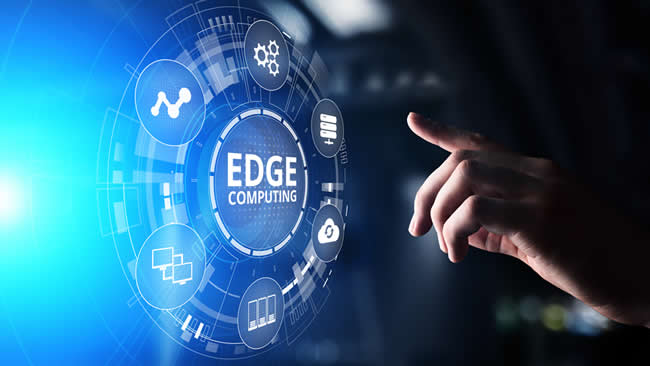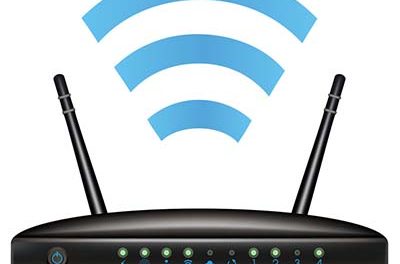The Internet of Things (IOT) has brought about changes in technology. Technologies such as cloud computing and machine learning became very important to analyse the data from the various IoT devices and process it into information. It was soon realized, however, that the data that was sent was so voluminous that there was a need for a new technology to be adopted to process the data quickly. This article explains what edge computing is, and gives examples of edge computing.
Before we get into the explanation and edge computing examples, let us have a definition of edge computing.
Table of Contents
What is Edge Computing?
Edge computing is a type of distributed architecture in which data processing occurs close to the source of data. This approach reduces the need to bounce data back and forth between the cloud and device while maintaining consistent performance.
When analysing edge computing in terms of infrastructure, edge computing is a network of local micro data centres that are used for the purpose of processing and storage. The central data centre is not eliminated from the picture. It oversees the proceedings, and obtains valuable insights into the local data processing.
The reason why the term edge is used is because in networking diagrams, the edge is the point at which traffic enters and exits the system. It is important to make a distinction between cloud computing and edge computing.
Cloud Computing vs. Edge Computing
Edge computing can be seen to be a form of expansion of the cloud computing architecture. It is an optimized solution for decentralized infrastructure.
The main distinction between cloud computing and edge computing and edge computing is the mode of infrastructure. The cloud is centralized, whereas the edge is decentralized.
The main reason why edge computing data processing is used is the need for quick processing of data. Some applications are time sensitive, and as a result there is a need for a method of processing that is very fast.
Edge Computing Examples
1. Voice Assistants
This edge computing example is most relevant to consumers. The most popular examples are Amazon’s Alexa, the Google Voice Assistant and Apple’s Siri. These applications combine the voice recognition and process automation algorithms.
Both processes rely on data processing on the spot for initial proceedings. They then connect to the central data centre to further refine the model
2. Autonomous Vehicles
Self-driving cars can produce up to 40 Terabytes of data in just 8 hours! This shows the amount of data that they produce, and this data needs to be processed with speed. For example, a self-driving car that detects a child playing in the street cannot wait to first send the data to a central server, obtain the information from the server, and send a signal to the car. Instead, in this edge computing example, edge computing is done to allow the car to automatically take actions.
3. Healthcare
This takes the most out of emerging technologies. IoT devices are used for patient monitoring, and they help in the general health management. Wearable IoT devices such as smart watches are capable of monitoring the user’s state of health. They even save lives on occasion. The IoT operation combines data processing on the spot for initial proceedings, and the data is then passed on to the cloud for analytical purposes. This is a great edge computing example.
4. Retail and e-Commerce
Retail and e-Commerce giants apply various edge computing applications to improve and refine the customer experience. They also help gather more ground level business intelligence. The data gathering is streamlined. The raw data stream is sorted out on the spot. Patterns are then established. As a result the data analysis is more focussed. This results in greater personalization and more efficient service. Examples of companies that use it include the following:
· Amazon
This company is a global e-Commerce giant. This therefore means that they need a distributed system in order for them to balance out their workload. Amazon uses intermediary servers to increase the speed of processing efficiency of the service on the spot.
· Walmart
This company uses edge computing to process payments at its stores. This results on a much faster customer turnaround. It also reduces the chances of very long queues being formed at the counter.
· Target
The target chain applies edge computing analytics to help them manage their supply chain. This helps them to quickly react to changes in the demand of their products, and to offer customers different tiers of discounts depending on the prevailing situation.
Merits of Edge computing
1. Speed
Edge computing allows for a lower latency as data is processed on the spot, or at a local data centre. This is common across all edge computing examples.
2. Security
Since edge computing is not centralized, the system will not be prone to distributed denial of service attacks. This layout helps neutralize the disruption of the whole network. This is found in most examples of edge computing.
3. Scalability
A combination of local data centres as well as dedicated devices can expand more consistent performance and expand computational resources. This is found in all edge computing examples.
4. Versatility
Edge computing enables vast amounts of diverse, valuable data to be gathered. The central network can receive data already prepared for further machine learning, or data analysis. This is found in most examples of edge computing.
5. Reliability
The edge computing system is close to the user, thus, the system is less dependent on the central network. This is found in all examples of edge computing.
Edge Computing Challenges
1. Data Loss
A centralized cloud infrastructure allows the integration of a data loss protection system that is system-wide. Decentralizing the infrastructure needs more monitoring and more management systems to handle the data from the edge. This is a very big challenge in some examples of edge computing.
2. Geo Location
Edge computing increases the role of the area in the data processing. In order to maintain proper workload and deliver consistent results, the companies need to have a presence in local data centres.
3. Security
This is both a merit, and a demerit of edge computing systems. A centralized cloud infrastructure system enables the adoption of unified security protocols. Edge computing needs the protocols to be enforced on remote servers. Traffic patterns and the security footprint are harder to analyse.
4. Network Bandwidth
Traditionally, resource allocation schemes provide higher bandwidth for data centres, while endpoints receive the lower end. With the implementation of edge computing, these dynamics shift drastically as edge data processing requires significant bandwidth for proper workflow. The challenge is to maintain the balance between the two while maintaining high performance.
Conclusion
This article has given an introduction to edge computing. Very many edge computing examples were given, as well as advantages of edge computing and challenges faced by edge computing. We hope you enjoyed it.





